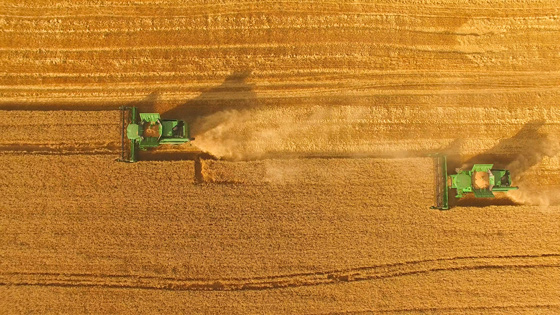What a grain marketing plan can do for your farm
Low yields and high prices are grain marketing themes these days. A few questions on farmers mind seem to be; Is it time to hold or sell, which marketing advisors should I trust, and what rotational considerations will I take into account for next year given the widespread drought. While a marketing plan can’t solve a drought, a plan can help farmers get their thoughts on paper and take a more coordinated approach to marketing.
So how many farmers DO have a formal written plan?
I took the question to Twitter last week to further understand the situation. Of 494 responses to a Twitter poll, 57% of respondents indicated they don’t have a grain marketing plan. The disclaimer here, is that one can never be too sure of the quality of Twitter poll data.
Although the comments were quite insightful. Several farmers indicated sentiments such as: “Sell at a profit and hope for the best.” ‘Or sell into a rising market and don’t look back.”
The problem with this strategy, is that if a farmer doesn’t know their cost of production they can’t be sure they are selling at a profit. But while farmers occasionally sell at below cost of production given rotational considerations, it’s not an ideal strategy. Further, if you typically like to keep up with the neighbor’s selling price, without knowing both yours and their cost of production you really can’t be sure whose selling for a greater profit.
Farm profitability might be a detterent to creating a formal marketing plan. Annual farm cash receipts on Canadian farms have been on a steady increase since 2016 with farmers net cash income jumping 21.8% in 2020 from the previous year. By most standards, grain farming has been quite profitable in the past five years. There’s also been little transportation issues.
And when times are good, business owners are less motivated to seek ways of saving or making more money. A sharp dip in grain prices would force growers to manage finances more strategically. Right now it seems global supply shortages and widespread drought have benefitted farmers who have a crop to market.
Many farmers don’t follow the market all that closely. Given the complexities of global markets, watching global trends requires significant time and energy. Further there are dozens of market analysts who sometimes contradict each other, it’s challenging to know who to trust and where to begin.
Pricing aside, most often the logistics of storage capacity and delivery will determine when grain must move throughout the year. More specific tools such as contracting options, the futures market, understanding basis, and setting targets are other ways producers can maximize their return on investment.
It seems important to acknowledge that planning isn’t a function that’s intuitive to everyone. For some, the process is too restrictive, and it doesn’t provide the comfort and clarity that it does for others. And frankly some people do quite well make impromptu marketing decisions.
This is where the process of incremental selling becomes an asset. At a bare minimum, if a farmer knows when large payments are due throughout the year they can sell during those periods at or near a set target price.
But many farmers do spend significant time planning business activities. So the absence of a formal marketing plan may not indicate no plan at all, but perhaps it is that they don’t have something written down.
There is no one size fits all approach to grain marketing. For example, specialty crop producers typically store grain for longer than they do cash crops given the volatility of the specialty market. Further, marketing plans can become irrelevant quickly given global uncertainty.
But some aspect of planning is still helpful. In fact, planning for the worst and hoping for the best might be the best approach to grain marketing.
I once heard someone say that farmers spend 90 per cent of their time learning about machinery and agronomics and only 10 per cent of their time learning about markets. Seems odd, given that sales can make or break a farm.
Having finances in order, knowing cost of production, utilizing information from various sources, and knowing storage capacity will take some of the guess work out of grain marketing.
If you would like to speak to one of our consultants about this topic contact us.



